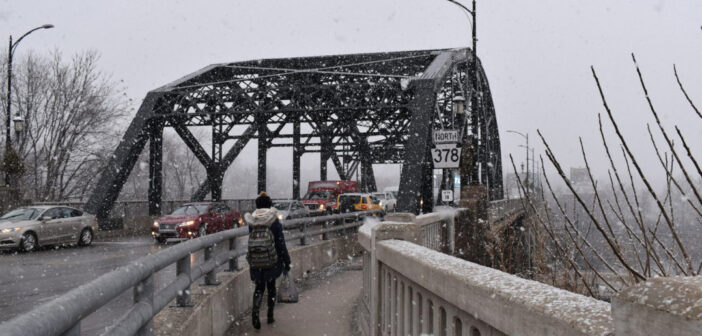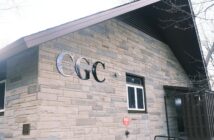Bethlehem’s Pedestrian Bridge Committee, established in 2016, is currently working on a project called “Bridge Bethlehem.” The project aims to build a pedestrian bridge connecting Bethlehem’s North and South Sides.
Currently, it is unclear when the bridge will be constructed.
Although there are already two bridges in Bethlehem that span the Lehigh River, the existing bridges present unsafe conditions for pedestrians and cyclists, according to the Bridge Bethlehem website. The physical barrier of the river also causes a disconnect between the North and South Sides of Bethlehem.
Darlene Heller, director of planning and zoning for the city of Bethlehem, is part of the planning process for the project. When the planning began, she said she worked to gather data for Bethlehem residents about the pedestrian bridge.
An independent consulting firm, WRT, was also hired to conduct feasibility studies and generate plans.
Heller said a committee, consisting of stakeholders in the community, City Council and a computer-aided design organization, looked at a draft of the document.
“Now, we’re at sort of a final draft editing phase, but we haven’t actually released it,” Heller said.
Bethlehem City Council member Paige Van Wirt said she was drawn to the project because it is a grassroots proposal.
“What really attracted me to it is that it came from our citizens,” Van Wirt said. “It came from Doug Royston and Tony Viscardi in the architecture department over at Lehigh. And it came from a lot of effort from just regular people who showed up at the IceHouse for an informational meeting on it.”
To fund the initial feasibility study, Van Wirt said she met with the Bethlehem mayor at the time, Robert Donchez, and County Executive Lamont G. McClure, Jr.
Van Wirt said McClure had a lot of faith in the project and committed to funding $40,000 of matching grants.
WRT provided three different options for the bridge: the first was a simpler version of the plan with a narrow bridge. The second was slightly longer and had a more substantial gathering space. Stacey Humphreys Blankin, a planner and associate at WRT, said the third version of the bridge proposal was the most elaborate.
She said the goal of the three different plans was to make sure the bridge would support many of the community’s needs.
“If the most important thing is for you to go from A to B, then you could go (the first) way,” Humphreys Blankin said. “If you want to think a little bit more about how this could create an outdoor living room for the community that brings people together and integrates some landscaped areas, and maybe some areas for art exhibits and watching fireworks or music, then we need to have a wider platform for gathering spaces.”
To continue with the theme of community involvement, the different plans were available to the public.
Humphreys Blankin said those involved with planning wanted to give the community access to the plans so they could consider their options and decide what makes the most sense.
According to the Bridge Bethlehem website, estimated costs of the project range from $35 million to $85 million.
Heller said funding for the chosen plan would come from the Department of Conservation and Natural Resources, the Pennsylvania Department of Community and Economic Development and the Lehigh Valley Transportation Study, which controls federal and state funding for similar projects.
“A project like this could support some of the goals for the city and I think it could improve the quality of life for many people,” Humphreys Blankin said. “But at the same time, I think they have to balance immediate needs, the impact of the economy, inflation and supply chains for custom materials, all of that. So maybe it’s not exactly the right time yet.”






Comment policy
Comments posted to The Brown and White website are reviewed by a moderator before being approved. Incendiary speech or harassing language, including comments targeted at individuals, may be deemed unacceptable and not published. Spam and other soliciting will also be declined.
The Brown and White also reserves the right to not publish entirely anonymous comments.
1 Comment
There is an option to have a pedestrian bridge and not have to build a new bridge.
My plan is to deactivate one lane of the Fahey for car travel and make this lane pedestrian/cycling. This would probably be the downstream most lane. Bethlehem paid for a study that included a cursory traffic study of the Fakey. He concluded that it is underutilized since the demise of the steel. He showed a pic of one car at the light towards city hall at rush hour.
The best thing is that this plan is that it is inexpensive, more environmentally sound and can be converted back to the way it was at any time. It was even proposed to be used this way for Musikfest but was never implemented. BTW, I’m an engineer and designed a 1o mile mountain bike rail system a mile or so from the Fahey, I used to live on the South side and have a business on 4th st.
I presented this idea at the public meeting at the Ice House way back when and the guy running the meeting essentially told me to sit down. I did get the ear of one of the Lehigh professors. So remember, you want less car travel and more peds and cyclists. Comment or get in touch if you want more information.